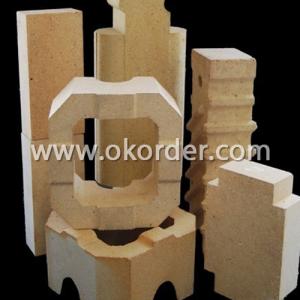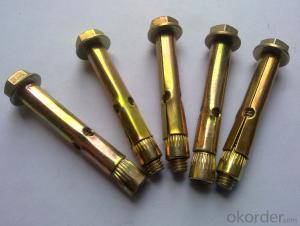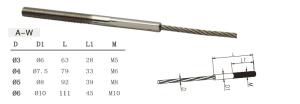Anchor Solar Inverter
Anchor Solar Inverter Related Searches
100w Solar Panel With Inverter Best Solar Panel Inverter 5000 Series Cast Aluminum Plate Portable Solar Panel Inverter First Solar Series 6 Module 12 Volt Solar Panel Inverter Plastic Solar Lanterns Buy Solar Panel Inverter Solar Panel Inverter Cost Solar Panel Without InverterHot Searches
Type Of Inverter For Solar Types Of Inverter For Solar Used Solar Inverter For Sale Inverter Size For Solar System Solar Edge Inverter For Sale 5kw Solar Inverter For Sale Solar Inverter For Sale Solar Inverter For Battery Solar Inverter For Split Ac Solar Inverter For Laptop Solar Inverter For Fridge Solar With Inverter Price Solar Inverter With 2 Battery Solar Inverter Price In China Best Solar Inverter In China Solar Inverter Price In Dubai Solar Inverter Price In Uae Solar Inverter Price In Kenya Solar Inverter Price In Kerala Solar Hot Water Collectors For SaleAnchor Solar Inverter Supplier & Manufacturer from China
Okorder.com is a professional Anchor Solar Inverter supplier & manufacturer, offers integrated one-stop services including real-time quoting and online cargo tracking. We are funded by CNBM Group, a Fortune 500 enterprise and the largest Anchor Solar Inverter firm in China.Hot Products
FAQ
- Yes, a solar inverter can be used in a mobile or portable solar power system. A solar inverter is responsible for converting the direct current (DC) generated by the solar panels into alternating current (AC) that can be used to power various devices. By incorporating a solar inverter into a mobile or portable solar power system, it becomes possible to harness solar energy and use it to power electronic devices while on the go. This makes it a convenient and sustainable option for providing electricity in remote locations or during outdoor activities.
- To calculate the power output of a solar inverter, you need to multiply the DC input voltage by the DC input current to determine the input power. Then, subtract the inverter's efficiency percentage from 100, divide the input power by this efficiency factor, and you will obtain the power output of the solar inverter.
- Yes, a solar inverter can be used in a ground-mounted solar tracking system. In fact, the solar inverter is an essential component of the system as it converts the DC electricity generated by the solar panels into AC electricity that can be used to power appliances and be fed into the grid. The solar inverter's functionality remains the same whether it is used in a ground-mounted solar tracking system or a fixed tilt system.
- Yes, a solar inverter can be used in mobile applications. There are specifically designed solar inverters available that are compact and portable, making them suitable for use in mobile applications such as RVs, boats, and other vehicles. These inverters can convert the DC power generated by solar panels into AC power to run various devices and appliances on the go.
- A solar inverter handles power quality disturbances by employing various protective measures. It typically includes features such as voltage regulation, frequency control, and surge protection. In the case of voltage fluctuations, the inverter adjusts the output voltage to maintain a stable power supply. Similarly, it monitors the grid frequency and adjusts its output frequency accordingly. Moreover, it incorporates surge protection mechanisms to safeguard against power surges and voltage spikes. Overall, a solar inverter efficiently manages power quality disturbances to ensure a reliable and stable electricity supply.
- Typically, a solar inverter requires its own grounding system. This is because the solar panels produce DC electricity, which needs to be converted to AC electricity by the inverter. The AC electricity is then either sent to the electrical grid or used within the building. Grounding is crucial for safety and proper functioning. In a solar power system, the grounding system provides a safe path for electrical current in case of faults like short circuits or lightning strikes. To prevent electrical shock hazards and comply with safety standards, a separate grounding system for the solar inverter is necessary. It safeguards the equipment, the building, and the people using or working on the system. The specific grounding requirements for a solar inverter may vary depending on local electrical codes and regulations. It is important to seek guidance from a qualified electrician or solar installer to ensure that the grounding system is designed and installed correctly for optimal safety and performance.
- Installation and maintenance of photovoltaic grid - connected inverter
- Before making an electrical connection, be sure to use the opaque material to cover or disconnect the PV panel. Exposure to sunlight, photovoltaic arrays will produce dangerous voltages. All installation operations must be done only by qualified technicians.
- The maximum efficiency at partial load for a solar inverter typically depends on the specific model and design. However, in general, modern solar inverters are designed to have high efficiency even at partial loads. This means that they can still convert a significant portion of the available solar energy into usable electricity, even when the solar panels are not operating at their maximum capacity. The maximum efficiency at partial load can vary, but it is usually in the range of 85% to 95% for most high-quality solar inverters.













































